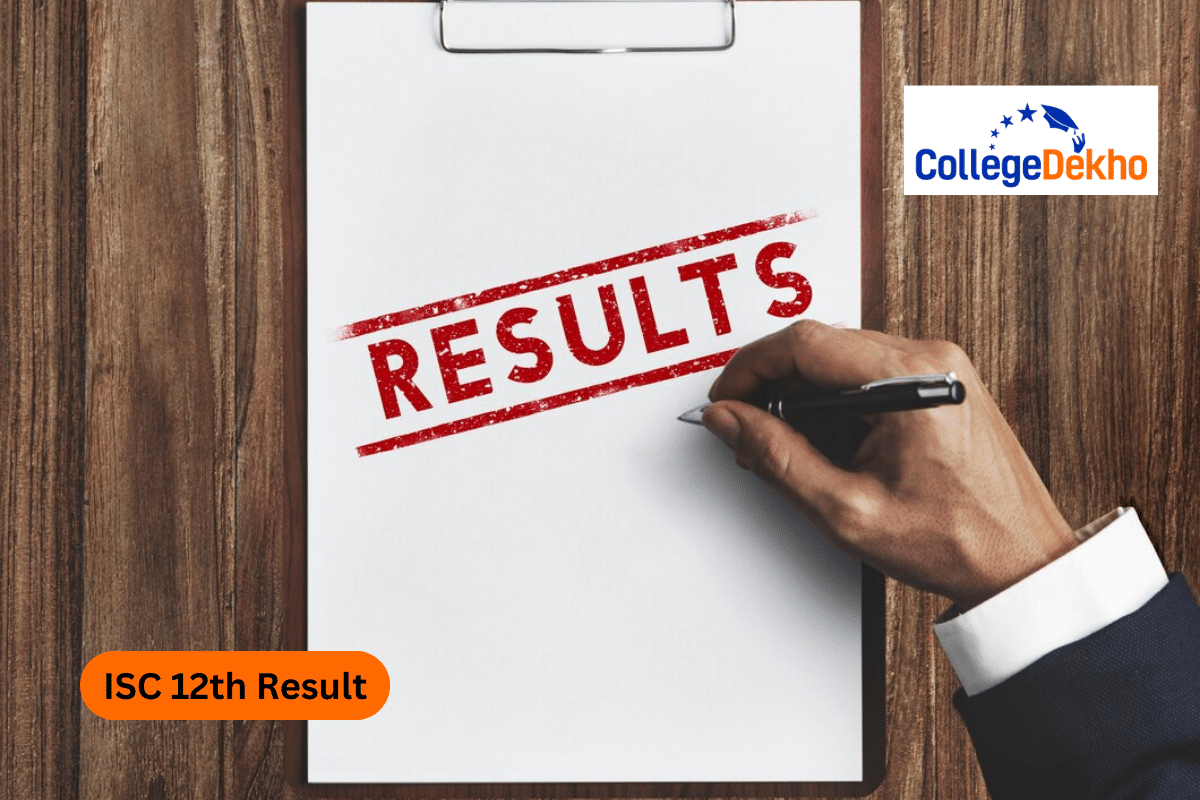The academic importance of Physics makes it one of the most contributory subjects in higher educational entrance exams like JEE Mains, NEET, etc. Check out the CBSE Syllabus for Class 12 Physics 2023-24 in the article given below.


Never Miss an Exam Update
CBSE Syllabus for Class 12 Physics 2023-24 is now live on the CBSE Academics website. The total mark for the Physics paper in CBSE class 12 is 70 marks. 30 marks will be provided for the Practical Examination. There are 14 chapters included in the CBSE syllabus for class 12 Physics 2023-24 and these chapters are grouped into different units. A total of 9 units are available in the subject. Electromagnetic waves and Optics has the most amount of weightage in the syllabus. The CBSE 12th Board 2024 uploaded the syllabus on the official website for the help of the students. Students can now download the syllabus and start their preparations for the board examination accordingly.
CBSE 12th board exams 2024 will be starting from 15 February 2024. The direct PDF for the syllabus is now uploaded on the official website of CBSE Academics to be downloaded by the students. Students are required to score 33% marks in order to successfully pass the board exams. The official PDF will also include a syllabus for the practical exams and the students are required to score 33% marks in the practical exam in order to get the pass certificate. Check more information about the CBSE Syllabus for Class 12 Physics 2023-24 here.
Also Read:
| CBSE Class 12 Result 2024 |
|---|
| CBSE Class 12 Grading System 2024 |
| CBSE Class 12 Arts Topper 2024 |
| CBSE Class 12 Commerce Topper 2024 |
| CBSE Class 12 Science Topper 2024 |
| CBSE Class 12 Marksheet 2024 |
CBSE Syllabus for Class 12 Physics 2023-24 PDF
The PDF for the CBSE 12th Physics syllabus is now available on the official website of CBSE Academics. Students can download the PDF for the syllabus from the direct links given below:
| CBSE Syllabus for Class 12 Physics PDF |
|---|
How To Download CBSE Syllabus for Class 12 Physics 2023-24?
Students who want to download the syllabus can check out the procedure to download it from the pointers given below:
- Step 1: The students are first requested to visit the official website of CBSE Academics at cbseacademic.nic.in
- Step 2: On the homepage, you will have to click on the option called Curriculum on the menu bar.
- Step 3: A dropdown menu will appear.
- Step 4: You have to now click on the option called Curriculum 2023-24
- Step 4: On the new page, click on the option called Senior Secondary Curriculum (XI-XII)
- Step 5: Now, you have to click on the option called Academic Electives - (Group-A)
- Step 6: Click on the Physics option and the syllabus PDF will open on your screen
CBSE class 12 Physics Exam Pattern 2023-24
CBSE class 12 Physics exam pattern 2023-24 is given below. Check the table.
Particulars | Details |
|---|---|
Conducting Body | Central Board of Secondary Education |
Question Paper Pattern |
|
Duration | 3 hours |
Medium | English / Hindi Note: Regional languages are an optional language exam for candidates and will not be used as the main form of examination. |
Mode | Offline |
Number of subjects | 5 or 6 (as elected by the student) |
Maximum Marks | 70 marks theory + 30 marks practical |
Passing marks for each subject | 33% |
Passing marks for the overall exam | Aggregate 33% |
CBSE Class 12 Physics 2023-24: Marking Scheme
Students can check out the major information about the CBSE syllabus for class 12 Physics 2023-24 subject from the table given below and it will help them to start their preparation for the board exams accordingly:
Name of the Unit | Name of the Chapter | Total Number of Marks |
|---|---|---|
Electrostatics | Electric Charges and Fields | 16 |
Electrostatic Potential and Capacitance | ||
Current Electricity | Current Electricity | |
Magnetic Effects of Current and Magnetism | Moving Charges and Magnetism | 17 |
Magnetism and Matter | ||
Electromagnetic Induction and Alternating Currents | Electromagnetic Induction | |
Alternating currents | ||
Electromagnetic Waves | Electromagnetic Waves | 18 |
Optics | Ray Optics and Optical Instruments | |
Wave Optics | ||
Dual Nature of Radiation and Matter | Dual Nature of Radiation and Matter | 12 |
Atoms and Nuclei | Atoms | |
Nuclei | ||
| Electronic Devices | Semiconductor -Electronics: Materials, Devices, and Simple Circuits | 7 |
CBSE Syllabus for Class 12 Physics 2023-24: Chapter Wise
There are a lot of chapters included in the Physics subject and you can check out the information about the detailed topics in each chapter from the table given below:
Name of the Chapter | Topics |
|---|---|
Electric Charges and Fields | Electric charges, Conservation of charge, Coulomb's law-force between two- point charges, forces between multiple charges; superposition principle, and continuous charge distribution. Electric field, electric field due to a point charge, electric field lines, electric dipole, electric field due to a dipole, torque on a dipole in the uniform electric field. Electric flux, statement of Gauss's theorem and its applications to find field due to infinitely long straight wire, uniformly charged infinite plane sheet, and uniformly charged thin spherical shell (field inside and outside). |
Electrostatic Potential and Capacitance | Electric potential, potential difference, electric potential due to a point charge, a dipole, and system of charges; equipotential surfaces, electrical potential energy of a system of two point charges and of electric dipole in an electrostatic field. Conductors and insulators, free charges, and bound charges inside a conductor. Dielectrics and electric polarization, capacitors, and capacitance, combination of capacitors in series and in parallel, capacitance of a parallel plate capacitor with and without dielectric medium between the plates, energy stored in a capacitor (no derivation, formulae only). |
Current Electricity | Electric current, flow of electric charges in a metallic conductor, drift velocity, mobility and their relation with electric current; Ohm's law, V-I characteristics (linear and non-linear), electrical energy and power, electrical resistivity and conductivity, temperature dependence of resistance, Internal resistance of a cell, potential difference and emf of a cell, combination of cells in series and in parallel, Kirchhoff's rules, Wheatstone bridge. |
Moving Charges and Magnetism | Concept of magnetic field, Oersted's experiment. Biot - Savart law and its application to current carrying circular loop. Ampere's law and its applications to infinitely long straight wire. Straight solenoid (only qualitative treatment), force on a moving charge in uniform magnetic and electric fields. Force on a current-carrying conductor in a uniform magnetic field, force between two parallel current-carrying conductors-definition of ampere, torque experienced by a current loop in uniform magnetic field; Current loop as a magnetic dipole and its magnetic dipole moment, moving coil galvanometer- its current sensitivity and conversion to ammeter and voltmeter |
Magnetism and Matter | Bar magnet, bar magnet as an equivalent solenoid (qualitative treatment only), magnetic field intensity due to a magnetic dipole (bar magnet) along its axis and perpendicular to its axis (qualitative treatment only), torque on a magnetic dipole (bar magnet) in a uniform magnetic field (qualitative treatment only), magnetic field lines. Magnetic properties of materials- Para-, dia- and ferro - magnetic substances with examples, Magnetization of materials, effect of temperature on magnetic properties |
Electromagnetic Induction | Electromagnetic induction; Faraday's laws, induced EMF and current; Lenz's Law, Self and mutual induction. |
Alternating currents | Alternating currents, peak and RMS value of alternating current/voltage; reactance and impedance; LCR series circuit (phasors only), resonance, power in AC circuits, power factor, wattless current. AC generator, Transformer |
Electromagnetic Waves | Basic idea of displacement current, Electromagnetic waves, their characteristics, and their transverse nature (qualitative idea only). Electromagnetic spectrum (radio waves, microwaves, infrared, visible, ultraviolet, X-rays, gamma rays) including elementary facts about their uses. |
Ray Optics and Optical Instruments | Ray Optics: Reflection of light, spherical mirrors, mirror formula, refraction of light, total internal reflection and optical fibers, refraction at spherical surfaces, lenses, thin lens formula, lens maker’s formula, magnification, power of a lens, a combination of thin lenses in contact, refraction of light through a prism. Optical instruments: Microscopes and astronomical telescopes (reflecting and refracting) and their magnifying powers. |
Wave Optics | Wave optics: Wave front and Huygens principle, reflection and refraction of plane wave at a plane surface using wave fronts. Proof of laws of reflection and refraction using Huygens principle. Interference, Young's double slit experiment and expression for fringe width (No derivation final expression only), coherent sources and sustained interference of light, diffraction due to a single slit, and width of central maxima (qualitative treatment only). |
Dual Nature of Radiation and Matter | Dual nature of radiation, Photoelectric effect, Hertz and Lenard's observations; Einstein's photoelectric equation-particle nature of light. Experimental study of photoelectric effect Matter waves-wave nature of particles, de-Broglie relation |
Atoms | Alpha-particle scattering experiment; Rutherford's model of atom; Bohr model of hydrogen atom, Expression for radius of the nth possible orbit, velocity and energy of electron in nth orbit, hydrogen line spectra (qualitative treatment only). |
Nuclei | Composition and size of nucleus, nuclear force Mass-energy relation, mass defect; binding energy per nucleon and its variation with mass number; nuclear fission, nuclear fusion. |
Semiconductor -Electronics: Materials, Devices, and Simple Circuits | Energy bands in conductors, semiconductors, and insulators (qualitative ideas only) Intrinsic and extrinsic semiconductors- p and n-type, p-n junction Semiconductor diode - I-V characteristics in forward and reverse bias, application of junction diode -diode as a rectifier. |
Also Check - CBSE Class 12 Syllabus 2024
CBSE Class 12 Physics Deleted Syllabus
When preparing for the CBSE Class 12 Physics exam, students must check the syllabus in detail. The board has eliminated some topics. Go through the table below to ensure which topics are not in course.Chapter | Page No. | Dropped Topics and Chapters |
|---|---|---|
Chapter 1: Electric Charges and Fields | 2–7 47–50 | 1.2 Electric Charge (delete only activity with paper strips and making electroscope) 1.3 Conductors and Insulators (delete only concept of earthing) 1.4 Charging by Induction Exercises 1.13, 1.25–1.34 |
Chapter 2: Electrostatic Potential and Capacitance | 81 87–92 | 2.15 Energy Stored in a Capacitor (delete only derivation) Exercises 2.12 to 2.36 |
Chapter 3: Current Electricity | 102–103 107–109 112–113 120–124 127–131 | 3.7 Resistivity of Various Materials (delete Tables 3.1 and 3.2 and Carbon resistors, Colour code for carbon resistor) 3.10 Combinations of Resistors – Series and Parallel Example 3.5 3.15 Meter Bridge 3.16 Potentiometer Exercises 3.3, 3.4, 3.10, 3.12, 3.14–3.23 |
Chapter 4: Moving Charges and Magnetism | 135 140–142 152–153 162–163 170–172 | Table 4.1 4.4.1 Velocity Selector 4.4.2 Cyclotron 4.8.2 The Toroid 4.10.3 The Magnetic Dipole Moment of a Revolving Electron Exercises 4.14–4.28 |
Chapter 5: Magnetism and Matter | 176–179 180 185–189 191 194–196 200–203 | 5.2.2 Bar Magnet as an Equivalent Solenoid (delete only mathematical treatment) 5.2.3 The Dipole in a Uniform Magnetic Field (delete only mathematical treatment) Example 5.4 185–189 191 194–196 200–203 5.4 Earth’s Magnetism 5.41. Magnetic Declination and Dip Table 5.2 5.6.2 Paramagnetism (delete only Curie’s Law) 5.6.3 Ferromagnetism (delete only Curie’s temperature; and Hysteresis) 5.7 Permanent Magnets and Electromagnets Exercises 5.1, 5.2, 5.9–5.11, 5.13–5.25 |
Chapter 6: Electromagnetic Induction | 215–219 230–232 | 6.7 Energy Consideration: A Quantitative Study 6.8 Eddy Currents Exercises 6.6, 6.10–6.17 |
Chapter 7: Alternating Current | 240 243 246–247 249–251 255–259 266–268 | Figure 7.7 Magnetisation and Demagnetisation of an Inductor Figure 7.10 Charging and Discharging of a Capacitor 7.6.2 Analytical Solution (of series LCR circuit) 7.6.3 Resonance (delete only Sharpness of Resonance) 7.8 LC Oscillations Exercises 7.6, 7.8, 7.10, 7.12–7.26 |
Chapter 8: Electromagnetic Waves | 273–274 276–278 279–280 287 | Example 8.1 8.3.2 Nature of Electromagnetic Waves (delete only about ether and page 277) Example 8.4 and 8.5 Exercises 8.11–8.15 |
Chapter 9: Ray Optics and Optical Instruments | 318 321–322 332–335 346 | 9.3 Refraction (delete only advanced sunrise and delayed sunset) 9.4.1(i) Mirage 9.4.1(ii) Diamond 9.7 Some Natural Phenomena due to Sunlight 9.7.1 The Rainbow 9.7.2 Scattering of Light Exercise 9.18 |
Chapter 10: Wave Optics | 358–359 359 363–367 368–371 372–376 379–381 383–385 | 10.3.4 Doppler Effect Example 10.1 10.5 Interference of Light Waves and Young’s Experiment (retain the final expressions for dark and bright fringes but delete the derivation; delete expression for fringe width) 10.6 Diffraction (retain only qualitative treatment) 10.6.3 Resolving Power of Optical Instruments 10.6.4 Validity of Ray Optics 10.7.1 Polarisation by Scattering 10.7.2 Polarisation by Reflection Exercises 10.7–10.21 |
Chapter 11: Dual Nature of Radiation and Matter | 388 397 400–404 407–413 | Table 11.1 Example 11.3 11.8 Wave Nature of Matter (delete only derivation for de Broglie wavelength of accelerated electron; and Heisenberg’s uncertainty principle) 11.9 Davisson and Germer Experiment Appendix 11.1 The History of Wave-Particle Flip-Flop Exercises 11.5, 11.7, 11.12 to 11.14, 11.16, 11.17, 11.19–11.37 |
Chapter 12: Atoms | 21–422 424–426 429 430 436–437 | 12.3.1 Spectral Series 12.4 Bohr Model of the Hydrogen Atom (retain only the expression for radius of nth possible orbit but delete its derivation) 12.5 The Line Spectra of the Hydrogen Atom (retain only qualitative treatment) Example 12.6 Exercises 12.3, 12.11–12.17 |
Chapter 13: Nuclei | 446–451 452–455 462–466 | 13.6.1 Law of Radioactive Decay 13.6.2 Alpha Decay 13.6.3 Beta Decay 13.6.4 Gamma Decay 13.7.2 Nuclear Reactor Exercises 13.1, 13.2, 13.6–13.10, 13.12–13.14, 13.18, 13.22–13.31 |
Chapter 14: Semiconductor Electronics: Material Devices and Simple Circuits | 485–495 497–499 | 14.8 Special Purpose p-n junction Diodes 14.9 Digital Electronics and Logic Gates Exercises 14.7–14.15 |
CBSE Syllabus for Class 12 Physics 2023-24 is essential for the students. We have shared detailed information about the name of the units and the chapters included in each unit of the Physics subject here for the help of the students.























